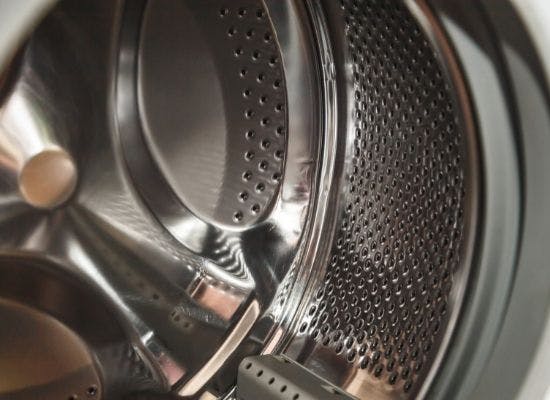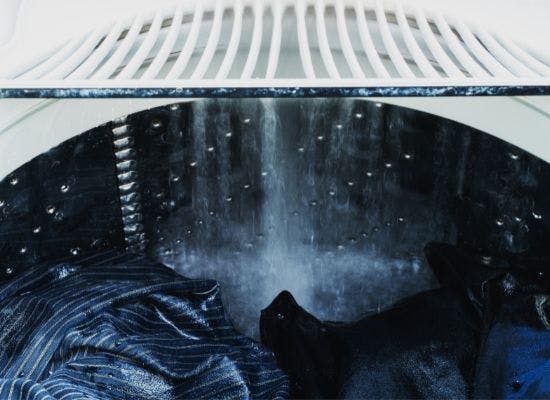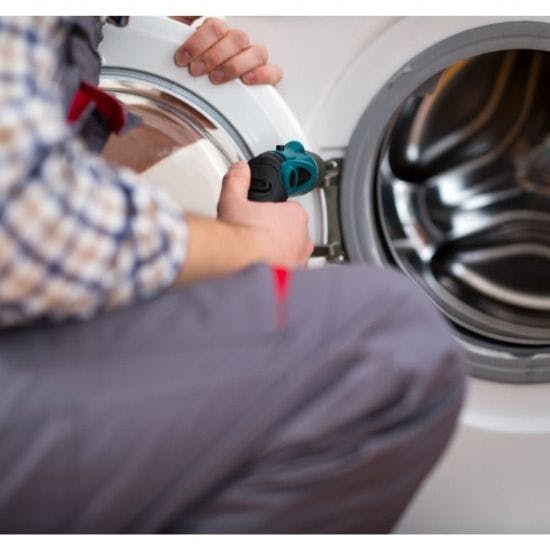Laundry
Washing Machine Drum Broken? Here's Why
Written by Dale Richardson - Updated: June 23, 2023
Stay Updated with Expert Tips!
Love our DIY guides and solutions for common household problems? Get expert advice, tips, and exclusive offers in our newsletter. From garden hacks to home maintenance and special deals, we've got it all. Join our growing community now!
Washing machines are a lifesaver - can you imagine having to handwash the family's laundry every week? No thanks. Unfortunately, as they're large mechanical contraptions, they're prone to failure and problems. If your washing machine drum is broken or making noises it shouldn't, Fraffles is here with the last-minute save - so don't go calling the repairman quite yet.
The most common causes of washing machine drum being broken are worn bearings, foreign objects, loose weights, and unbalanced drums.
Let's take a look, shall we?
What's Breaking Your Washing Machine?
Let's start with the simple stuff and an obligatory warning.
Before you start any of these repairs, ensure the washing machine is disconnected from power at the main. You can also just unplug it, depending on how easy that is to do.
This is important for one reason only - safety. You don't want it turning on or shocking you while you're taking a dive inside. So play things smart, and just... listen, please. Now - why is your washing machine drum broken? There are a lot of possible answers to that, so let's start with the easy solutions first - no sense in making unnecessary repairs.
Foreign Objects

This is something that everyone has experienced at least once, more likely than not. Perhaps it's a zipper or a bra wire, or even lighter! It doesn't matter what the item is, but rather where it is - that is to say, it's not where it should be (on/in your clothing).
The two most easily recognized signs of this are torn or damaged clothing and screeching or grinding noises when running the washer.
If your clothing is coming out unrecognizable (or it just has a few new holes in it), take a look at where the drum and frame of the machine meet. There's usually a small rubber gasket that lines the meeting point between door and drum - this is your culprit. Oftentimes, the gasket will start to fail or pull away during the wash cycle, allowing items to get trapped in between the drum and door.
The solution to this is simple - dig around and find whatever the offending item is, and try again! If you're having difficulty getting the item out, grab a friend. Have one person lean on the drum, pushing it away from the door. (Be careful here to not bend anything, but you'll need a bit of force.) Once you have someone pushing on the drum, simply grab whatever is caught and finagle it out of the gap between the door and drum.
Give your machine a test cycle with some (potentially sacrificial) clothes, and see if the problem is fixed. If there is still an unpleasant noise, turn off the machine and move down the list.
READ NEXT: This is what you can do with a broken mini-fridge.
Uneven Load

This is something that most people already know, but we might as well include it for those that may be uninitiated in adulthood and its small pieces of oft-forgotten knowledge. When loading a washing machine, you need to keep the weight of items you're washing in mind. If you don't, you can unbalance the machine, causing it to shake, make loud noises, and ultimately not properly do its job.
If you've just been throwing items in willy-nilly (for example a bunch of towels alongside light clothing), you're bound to experience this. Try lightening your washing loads and putting equally-weighted items in the same run. This will allow your washer to spin more evenly and will put less stress on the weights and bearings - the next two things on our list.
READ NEXT: 4 Reasons why washing machines leak when not in use.
Weights
Drum weights are attached to your machine's drum. They are there to specifically address issues caused by the above problem - uneven loads. They're meant to control excessive movement caused by the spinning drum, keeping its movement even. When you put in unevenly weighted loads, they cause stress on the weights, as they have to work harder to do their job.
To check the weights of your machine, you'll need to remove the top (or side, if it's a top-loaded machine). Click here to see what weights look like . For those that don't want to watch a video, though, let's walk you through it.
Basically, all you need to do is locate the washers that hold your weights in place. If they feel loose, that's a sign that your weights are also loose. Simply tighten the washers (with a wrench, not your hand) and give the machine a test run. You should see an immediate change in performance and a noticeably quieter washing cycle.
If your washing machine drum is still broken, you need to move on to the least fun part - bearings.
Bad Bearings

Let's test something out, shall we? Go to your washing machine and manually spin the drum with nothing in it. What does it sound like? Does the drum move silently, or does it make a grinding noise when moving? If it's the former, bearings aren't your problem - but if it's the latter, you're likely going to need to replace a few bearings.
Another way to test if you're unsure is to put pressure on the top of the drum. If it moves more than a slight (1-2 cm) amount, the bearings are bad.
Unfortunately, this isn't an easy fix. If you're mechanically inclined (unlike myself), then you can take a look here for a video explaining how to replace drum bearings . Keep in mind, though, that this is an expensive and long process. If you don't feel comfortable taking the machine almost entirely apart - this isn't for you.
I recommend that you call a professional if you think your bearings are the cause of the issue. They're hard to reach and take a few tools that you might simply not have. It will be cheaper than buying a new machine, though, so make use of people who know more than you.
Final Thoughts
Washing machines are complicated, yes. Luckily though, a washing machine drum that's broken is often caused by small, easily fixes issues. Begin by ensuring you're running your loads with even weight (no jeans or blankets in with underwear). Next, check that you don't have any foreign objects caught between the drum and frame. The last easy thing to inspect is your washing weights. These are held by an easily accessed washer that can be tightened in a couple of minutes.
If none of these work, it's time to check your bearings. Perform the "push test" detailed above, and then give a professional a call. Yes, mechanics are expensive - but you know what's more expensive? Entirely replacing a washing machine. And the best part? Professionals do this for a living, meaning they'll pinpoint the issue far faster than you ever could. So sit back, make a drink, and let the pros do their job.
One More Thing Before You Go!
Craving more DIY insights? Don't miss our expert guides and exclusive deals. Subscribe now and get the best of home and garden tips straight to your inbox. Join our community and stay in the know!
Get Cashback Faster & Earn Free Fraffle Tickets
Shop at your favourite stores and enjoy cashback in days, not months. Plus, sign up today to get 5x Free Fraffle tickets!


















